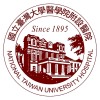
Study to Evaluate the Efficacy and Safety of CTP-543 in Adults With Moderate to Severe Alopecia...
Alopecia AreataThis study evaluates the safety and effectiveness of an investigational study drug (called CTP-543) in adults (18 years and older) who have 50% or greater scalp hair loss.

Sodium Valproate-loaded Nanospanlastics in Patchy Alopecia Areata in Comparison to Topical Steroids...
Alopecia Areatathe aim of this study is to assess the efficacy and safety of sodium valproate-loaded nanospanlastic in the treatment of patchy AA, in comparison to conventional therapy with topical steroids

Adipose-derived Stem Cell Conditioned Media as a Novel Approach for Hair Regrowth in Male Androgenetic...
AlopeciaAndrogenetic1 moreThis study investigated the efficacy of adipose derived stem cell conditioned media (ADSC-CM) combined with minoxidil for hair regeneration therapy in male AGA.

Condensed Nanofat Grafting for Treatment of Androgenetic Alopecia
Androgenic AlopeciaNowadays, multiple treatment modalities have been applied clinically to treat androgenic alopecia, such as Follicular unit transplantation(FUT), finasteride, platelet-rich plasma injection(PRP), etc. In this clinical trial, the investigators aim to analyze the effect of nanofat grafting on treating androgenic alopecia in male.

Open Label Study of ATI-50002 Topical Solution Administered to Adult Subjects With Eyebrow Loss...
Alopecia AreataAlopecia Totalis1 moreThe main objective of this study is to assess the safety, tolerability and efficacy of ATI-50002 Topical Solution in subjects with unilateral or bilateral loss of eyebrow hair due to alopecia areata (AA), alopecia universalis (AU) or alopecia totalis (AT).

Study to Evaluate the Efficacy and Safety of P-3074 Topical Solution in the Treatment of Androgenetic...
AlopeciaAndrogeneticThe purpose of this study is to confirm the clinical efficacy and the safety of P-3074 in participants with androgenetic alopecia.

A Safety and Efficacy Study of Setipiprant Tablets in Androgenetic Alopecia in Males
AlopeciaThis study will evaluate the safety, tolerability and efficacy of the oral administration of setipiprant tablets 1000 mg twice daily (BID) relative to placebo in 18 to 49 years old males with androgenetic alopecia (AGA).

STYLE -- A Trial of Cell Enriched Adipose For Androgenetic Alopecia
AlopeciaAndrogeneticThe primary objective of this study is to evaluate the safety and feasibility of the Celution and Puregraft Systems in the processing and preparation of an autologous fat graft enriched with adipose-derived regenerative cells (ADRCs) in the treatment of early alopecia androgenetica.

"iRestore" Light Therapy Apparatus
AlopeciaCurrent effective therapies of pattern hiar loss are topical minoxidil and oral finasteride. Finasteride is an inhibitor of type 2 5α-reductase and will cause hypospadias in male infant if taken or touched by pregnant woman. The effect of minoxidil is still known now but the dilation of scalp vessel might improve the progression of pattern hair oss. However, minoxidil is not effective for frontotemporal recession and sometimes cause scalp irritation. Low-level laser therapy (LLLT) a new therapy to treat alopecia. In 2007, LLLT was approved by the FDA as a treatment for hair loss. In some small studies, patients had a decrease in the number of vellus hairs, an increase in the number of terminal hairs, and an increase in shaft diameter. Up to now, however, no longer, placebo-controlled studies have proved its efficacy in this application. According to the mechanism of paradoxical hair growth (PHG), sublethal injury to the hair follicle could stimulate the hair follicle to enter anagen via the release of factors that alter angiogenesis, leading to increased blood flow to the dermal papilla. Furthermore, load inflammation in the papilla nad heat shok response, possibly mediated by HSP27, may play a role in activation of follicular stem cell. This study is a randomized, blinded, self-comparison and superior clinical trial design. In this clinical trial, the investigators try to evaluate the efficacy of low-level laser therapy in treating pattern hair loss. Pattern hair loss is characterized by increased vellus hairs and decreased shaft diameter, and these features are improved by LLLT in previous.

A Pilot Study of Tralokinumab in Subjects With Moderate to Severe Alopecia Areata
Alopecia AreataThe purpose of this study is to assess whether tralokinumab can be a helpful treatment for alopecia areata. This is a randomized, double-blind, placebo-controlled pilot study of a total of 30 subjects with moderate to severe alopecia areata involving 30-100% of the scalp. Expected is 50% of these subjects to have concomitant alopecia areata (AA) and atopic dermatitis (AD). Subjects with AA alone (15 subjects) will be randomized (2:1) to either receive tralokinumab or placebo via subcutaneous injection every 2 weeks for 24 weeks. Subjects with concomitant alopecia areata and atopic dermatitis (15 subjects) will be randomized separately in a 2:1 ratio to receive tralokinumab or placebo via subcutaneous injection every 2 weeks for 24 weeks.
